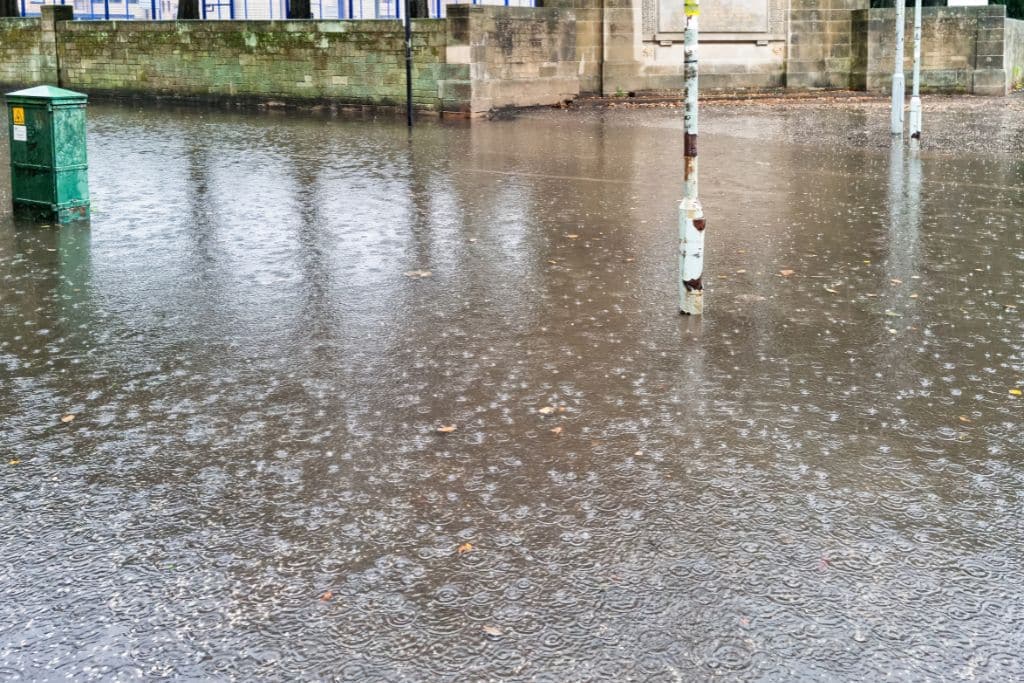Japan’s hottest day on record and heaviest rainfall all happened within a week.
—
Southwestern Japan is battling with heavy rain and severe flooding, just days after the country recorded its hottest day in history.
The Japan Meteorological Agency issued a heavy rain emergency warning, the highest level on its five-tier scale, for Tamana City and Nagasu Town in the southwestern prefecture of Kumamoto at midnight on Monday as record rainfall caused severe flooding and prompted the evacuation for over 3 million people.
In Tamana City, 404 millimetres of rain fell in the span of 12 hours – a record for the area and twice the average for August. Between last Wednesday and Monday, the total rainfall in Fukuoka Prefecture, north of Tamana, was 567 millimeters, while the Kumamoto Prefecture recorded 581 millimeters, both more than three times the average monthly rainfall in August.
In Kumamoto, two people in their 60s, a man and a woman, were swept away by the flooding Saigo River. Rescue workers were also looking for a person who got hit by a mudslide while driving to an evacuation centre.
Weather warnings across Japan at 3pm on Monday, August 7. (Black: Heavy Rain Emergency Warning). Image: The Japan Meteorological Agency.
According to the Fire and Disaster Management Agency, evacuation advisories and warnings were issued to over 3 million people in the southwestern Kyushu. Approximately 384,000 residents, primarily in Kumamoto Prefecture, were under Japan’s highest-level evacuation warning as of Tuesday.
The torrential rain that began late last week left one person missing and four others injured in the southern prefecture of Kagoshima. A mudslide in Kagoshima’s Aira City caused a house to collapse, killing one.
The Japan Meteorological Agency said warm, moist air flowing into a rain front is bringing record rainfall to Kumamoto. Rain is also expected to intensify in the eastern and northern parts of Japan.
In the 24 hours through early Wednesday, 150 millimeters of rain are expected in northern Kyushu and Kanto-Koshin, 120 millimeters for Hokuriku, and 100 millimeters for Tokai.
Extreme Heat
The heavy rain follows Japan’s hottest day in history, 41.8C, recorded in Isesaki City, north of Tokyo, last Tuesday, with heatstroke warnings affecting 44 out of Japan’s 47 prefectures. It surpassed the previous record of 41.2C, set on July 30 in Tamba City in the western prefecture of Hyogo. It is the sixth time this summer that the mercury exceeds 40C in parts of the country.
In Niigata Prefecture, a major rice-producing area, rainfall in July dropped to just 3.5 millimeters, compared to 376.5 millimeters during the same month last year.
The lack of rain is not the only problem. According to Japan’s agriculture ministry, high temperatures could lead to outbreaks of stink bugs across the country, which is known to damage rice crops. The bugs spread more rapidly with rising temperatures.
From November 2024 to March 2025, the Saitama Prefectural Pest and Disease Control Center surveyed rice stink bugs and found them taking shelter for the winter at 58.1% of 172 sites. The average density was 17.1 bugs per square meter, which is 43 times higher than the previous year’s 0.4.
“We need to act with speed and a sense of crisis to prevent damage,” said Agriculture Minister Shinjiro Koizumi. “The government will offer support for pest control and measures to tackle drought,” he added.
This story is funded by readers like you
Our non-profit newsroom provides climate coverage free of charge and advertising. Your one-off or monthly donations play a crucial role in supporting our operations, expanding our reach, and maintaining our editorial independence.
About EO | Mission Statement | Impact & Reach | Write for us



AloJapan.com